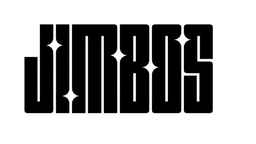Why So Many Detailers Over-Correct Paint (And What to Do Instead)
Most detailers are doing too much. Too many passes, too aggressive, too often. The result? Wasted time, thin clear coat, and less gloss. Here’s why over-correction is killing results—and what to do instead.
The Hidden Problem: Over-Correction
We get it—you want perfect paint. But chasing perfection on every panel is a recipe for:
- ❌ Removing too much clear coat
- ❌ Burning edges and tight spots
- ❌ Spending 6 hours to fix a few barely visible swirls
Even worse? Most customers (or even car owners) won’t notice the difference between a 90% correction and 100%.
The Smart Approach: Correct What Matters
Instead of chasing invisible swirls or polishing every inch the same, here’s what pros do:
- ✅ Do a proper test spot
- ✅ Choose the right pad and polish for the goal
- ✅ Limit passes to what the paint actually needs
- ✅ Protect the work immediately with a ceramic or sealant
The Right Tools for Smart Correction
Our Picture Perfect Polish and pad combo was built for speed, safety, and simplicity:
- Cut & Finish Pad – one pass = swirl removal + gloss
- Black Finishing Pad – refine without hazing
You don’t need three liquids and four steps to make a car look amazing. You need control and consistency.
Why Less Is Actually More
- 🚫 Less clear coat loss = longer paint life
- ⏱️ Less time per car = more jobs per day
- 📈 More gloss with less product = better customer satisfaction
Focus on What the Paint (Actually) Needs
Not every panel needs aggressive correction. Black hoods need more attention than white bumpers. Tailgate may be perfect—hood may be trashed. Don’t treat them the same.
Recommended System to Avoid Over-Correction
Related Posts
Frequently Asked Questions
What is over-correction in paint polishing?
Over-correction means doing more polishing than needed—removing excessive clear coat for marginal improvement.
How do I know when to stop polishing?
When the surface is 80–90% improved and you’re starting to see diminishing returns, stop. Don’t chase perfection unless required.
Will a one-step polish be enough?
Yes—for most vehicles. Especially with a pad-dependent system like Picture Perfect Polish.
Can over-correction damage the paint long-term?
Yes. Every time you polish, you remove clear. Over time, this weakens UV resistance and can lead to clear coat failure.



